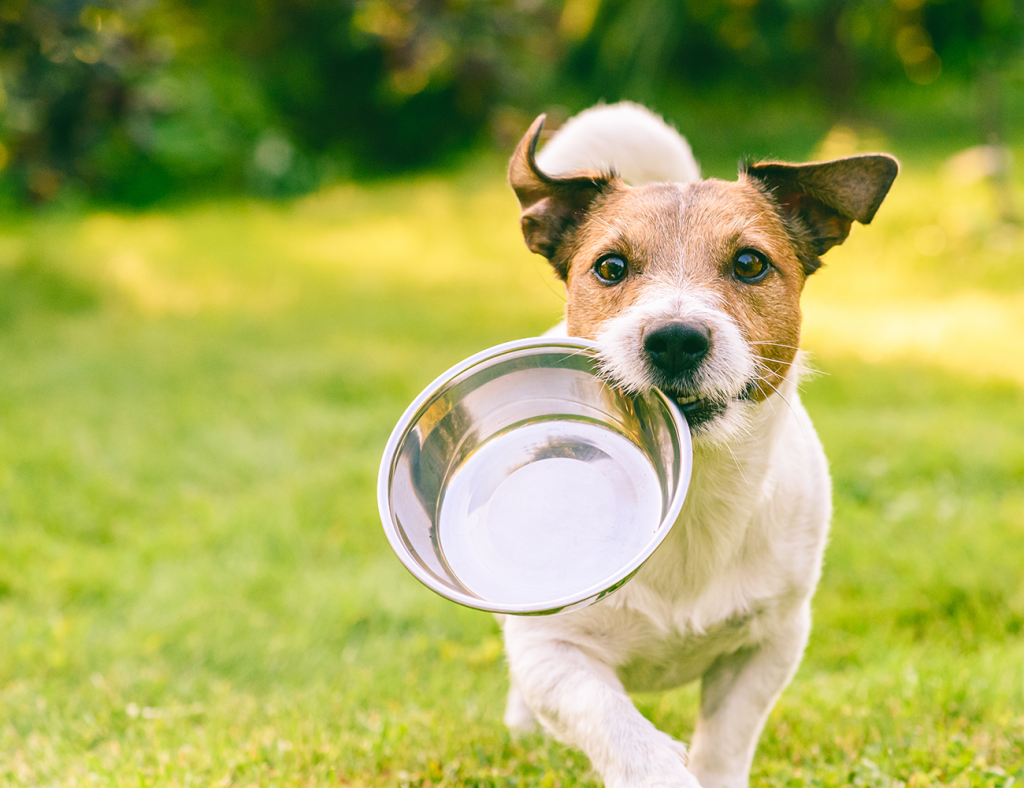Change of diet for dogs – this is how it works!

Dog owners know: The diet of their four-legged friend is sometimes the most important factor in its well-being. Food must meet the highest (human as well as canid) demands. Now, however, in the course of a (hopefully long) dog’s life, we may have to make a change in the diet.
The Reasons for this can be manifold:
- A new phase of life, such as e.g. Puppy > Adult
- Diet food due to overweight
- Less calories
- From dry to wet food or vice versa
- Development of feed allergy
- and much more
Veterinarian and molecular biologist Natasa Xenophontos, DVM, explains the importance of a proper dietary change in dogs and especially its major role in maintaining a healthy microbiome.
“The gut microbiome responds metabolically to the nutrient composition in the diet. Dietary fiber, protein, and carbohydrate content have strong effects on the composition of the microbiome. Changes in these nutrient profiles can cause rapid changes on health. The gut microbiome contributes to the animal’s metabolism, protects against pathogens, forms the immune system, and directly or indirectly influences most of the animal’s physiological functions through these basic functions.”
Rapid microbiome change can cause dysbiosis. That is an imbalance in the bacteria composition of the digestive tract, and thereby contributes to the proliferation of pathogenic bacteria. In the case of dysbiosis in the intestine, manifestations in the animal may include
- Diarrhea
- Flatulence
- Abdominal pain
- Vomiting and
- itching may occur.
In this respect, it makes sense to change the feed over a longer period of time.
A change of diet – regardless of the reason – is often a challenge for both the dog and the human. So that it won’t come to discomfort in the process, or later with the new food, we have some
tips for the optimal changeover:
- Tip: Allow for time and be patient! A feed change should extend over at least 7 days, better 14 days. For highly sensitive dogs, the process may well last as long as 3 weeks.
- Tip: Keep an eye on the animal’s behavior and droppings. If the dog’s well-being deteriorates or the fecal consistency changes, rather step back.
- Tip: When the dog is switched to pure dry food, it is sometimes necessary to provide it with more water than before.
The process of changing the feed:
The old feed is replaced step by step with the new feed (zb. entoVITAL hypoallergenic). In the first step, only small parts of the feed are replaced. Depending on the acceptance of this, you can replace about 1/4 of the usual food with the new one. After about 2 days with this mixture is again replaced another quarter, and after another 2 days again an additional quarter. So, after about 6 days, the ratio of the feed mixture is: 1/4 previous feed and 3/4 new feed. In the best case, the conversion process is completed after about 7 days. However: This process can also extend over 3 weeks in particularly sensitive animals.

Natasa Xenophontos, DVM
The veterinarian and molecular biologist with Cypriot roots lives and works in Berlin (D).
 +43 720 500 205
+43 720 500 205 +49 89 2620 12 050
+49 89 2620 12 050